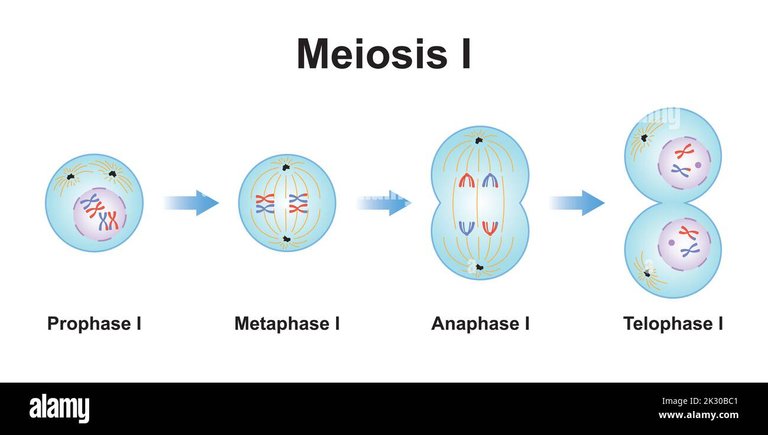PHASE OF MEIOSIS TYPE
The exchange of segments result in the recombination of genetic information. After crossing over, each pair of homologous chromosomes remain as a bivalent.
In 1911, the American geneticist Thomas Hunt Morgan observed the phenomenon of crossing over in fruit fly Drosophila Melanogaster.
Chromosomes condense further, the nucleoli disappear, and the nuclear envelope disintegrates. Centrioles, which were duplicated during interphase, migrate to the two poles and form spindle fibres. The kinetochores spindle fibres attach with the kinetochores of chromosomes. While the non-kinetochores spindle fibres from both sides interact with each other. Two kinetochores spindle fibres (from the opposite poles) attach with a pair of chromosomes. In mitosis, we have seen that two kinetochores spindle fibres attach with one chromosomes.
Metaphase I
The pairs of homologous chromosomes align along equatorial plane forming the metaphase plate.
Anaphase I
Kinetochores spindle fibres shorten. It result in pulling apart the chromosomes of each pair. Since one chromosomes is pulled toward one pole, two haploid sets are formed. Each chromosomes still contain a pair of sister chromatids.
Telophase I
Chromosomes arrive at the poles. Each pole now has half the number of chromosomes but each chromosomes still consist of two chromatids. Spindle network disappears, and nuclear envelopes is formed around each haploid set. Chromosomes uncoil back into chromatin.
Cytokinesis (the pinching of the cell membrane in animal cells or the formation of the cell wall in plant cells) occurs and the creation of two haploid daughter cells is completed.
After meiosis I both haploid daughter cells enter a period of rest known as interkinesisor interphase II. The interphase II is different from the interphase of mitosis and meiosis I. There is no S-phase and so there is no duplication of chromosomes during this stage.
Stages in Meiosis I

Source of Photo
All data collected from my book of Science.